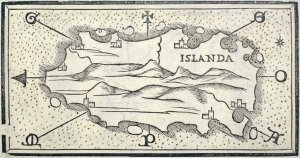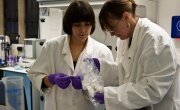FEBRUARY 2015: Computational Reconstruction of Hans Jonatan’s Genome
The EUROTAST fellows will be presenting the findings of their research at the upcomingGenetics/Heritage conference, 23-25 April at the International Slavery Museum in Liverpool. Deadline for submission has been extended to March 15. To submit a paper or to attend the conference, visit the Genetics/Heritage website.

“Islanda”, a map of Iceland by Benedetto Bordone in 1547, courtesy of Wikimedia Commons.
Title: Computational Reconstruction of Hans Jonatan’s Genome
Authors: Anuradha Jagadeesan and Agnar Helgason
Abstract:
The Transatlantic Slave Trade resulted in mass uprooting of millions of Africans to the New World. The history has rich details about ships, countries involved, profits made, owners of plantations, but almost no information about the identity or origin of enslaved individuals. The enslaved Africans were given European names which further entangled their origins. Until now single genetic locus systems such as mtDNA, Y chromosome, or few autosomal markers have been used to attempt to identify the source populations in Africa of the descendants of enslaved people currently residing in the Americas and Europe. However, such approaches lack specificity and provide limited information about the origin of a single matrilineal or patrilineal enslaved ancestor.
Icelandic history contains an unusually tractable case study for reconstructing the genome of a long dead ancestor through genealogical information and genotype data from contemporary descendants. In this present study, we have developed and implemented methods to reconstruct the genome of Hans Jonatan. He was born in 1784 on the Caribbean island St. Croix to an African enslaved mother and a probable Danish father. Jonatan escaped and arrived in Djupivogur, Iceland in 1805, where he later married an Icelandic woman, with whom he had two children. According to a genealogy compiled by one of his descendants, Jonatan has a few hundred descendants currently living in Iceland today. By reconstructing a large part of the genome of a single enslaved ancestor, much more resolution of genetic data is available to locate his or her origins. Thus, in the context of the trans-Atlantic slave trade specifically, this study opens up a new avenue in analyzing personal histories of enslaved individuals through collective use of their descendant’s genotype data.

